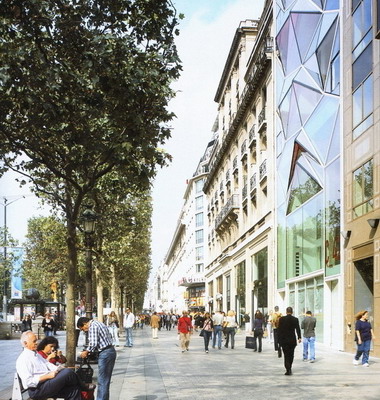Public Transportation Guide for Overseas City Travel
When traveling in foreign cities, public transportation is more convenient. However, how to choose, how to combine for better value, and where to buy tickets? Let's take a look at the transportation guides for London's subway, Barcelona's sightseeing bus, and Brisbane's public ferry!
For city sightseeing, purchasing individual city bus tickets or subway tickets can be inconvenient and the accumulated cost can also be significant. A subway ticket calculated by day or a city loop tour bus ticket can effectively save costs. Sometimes, you might even get free tickets, such as finding a free voucher for the sightseeing bus in the travel information manual of Helsinki, Finland.
**London Subway - Smart Use of Pass**
A single trip on the London subway costs £1.40 for short distances, £2.80 for medium distances, and £3.30 for long distances. Therefore, it's advisable to purchase a Travelcard, which includes return train tickets, unlimited subway rides, and bus services. The price is only about £2 more expensive than buying separate round-trip tickets. Currently, London promotes the Oyster Card, which is a prepaid card that requires a deposit. Its advantage is that once the daily Travelcard limit is reached, no further charges will apply, making it more economical the more times you ride in a day. The London subway is divided into 6 zones and 12 lines, with subway tickets and Travelcards varying based on the starting point. If you're purchasing a city-wide Travelcard individually, you can choose between zones 1-2 or 1-3 depending on your destination. If you buy a one-day Travelcard that includes train tickets, it generally covers all 6 zones. The Oyster Card offers options for one day, seven days, and monthly passes, and can also be purchased by zone. Since London attractions are relatively concentrated, purchasing a ticket for zones 1-2 is sufficient.
**Barcelona Sightseeing Bus - Many Discounts Connecting Attractions**
In Barcelona, you often see city sightseeing buses with "big eye" logos on their bodies, commonly known as "up and down" or "red-blue line." This is a looped bus line connecting various attractions in the city. After purchasing a ticket, you can ride unlimited times along the route. Buses depart from each station simultaneously between 9:00 AM - 9:30 AM and end operations at 8:00 PM. They operate every day except December 25th and January 1st, with intervals ranging from 5 to 25 minutes. A one-day ticket costs €19, a two-day ticket costs €23, and for children aged 4-12, the one-day and two-day tickets are €11 and €15 respectively. Tickets can be purchased at the departure station in the city center at Plaza Catalunya or at various stations and information centers. The two-day ticket is more cost-effective. The ticket also comes with a Barcelona map marked with driving directions, routes, and attractions, a tri-lingual (Spanish, Catalan, English) booklet introducing attractions, and a discount coupon book.
**Brisbane Public Ferry - Economical Night Tours**
Australia’s Brisbane has three types of public transport: ferries (ferry), trains (railway), and buses. The bus and train networks are dense and far-reaching, while the small ferries mainly travel back and forth from the lower end of the Brisbane River to near its estuary. These public ferry ferries called CityCats have fares of just a few Australian dollars, making them the best choice for night tours of the scenery along both sides of the Brisbane River. Brisbane's intra-city transportation charges are zone-based; regardless of the mode of transport, as long as you stay within the same zone, there is no additional charge. There are five types of fares: single journey, day pass, off-peak pass, weekly pass, and monthly pass. Each type also offers student (concession) and adult (adult) options. Purchasing a day pass or an off-peak pass is much more economical than buying single journey tickets.
If you would like to reprint [Public Transportation Guide for Foreign City Tourism], please retain the original address: http://tgouwu.com/gouwu/zatan_1135.htm
